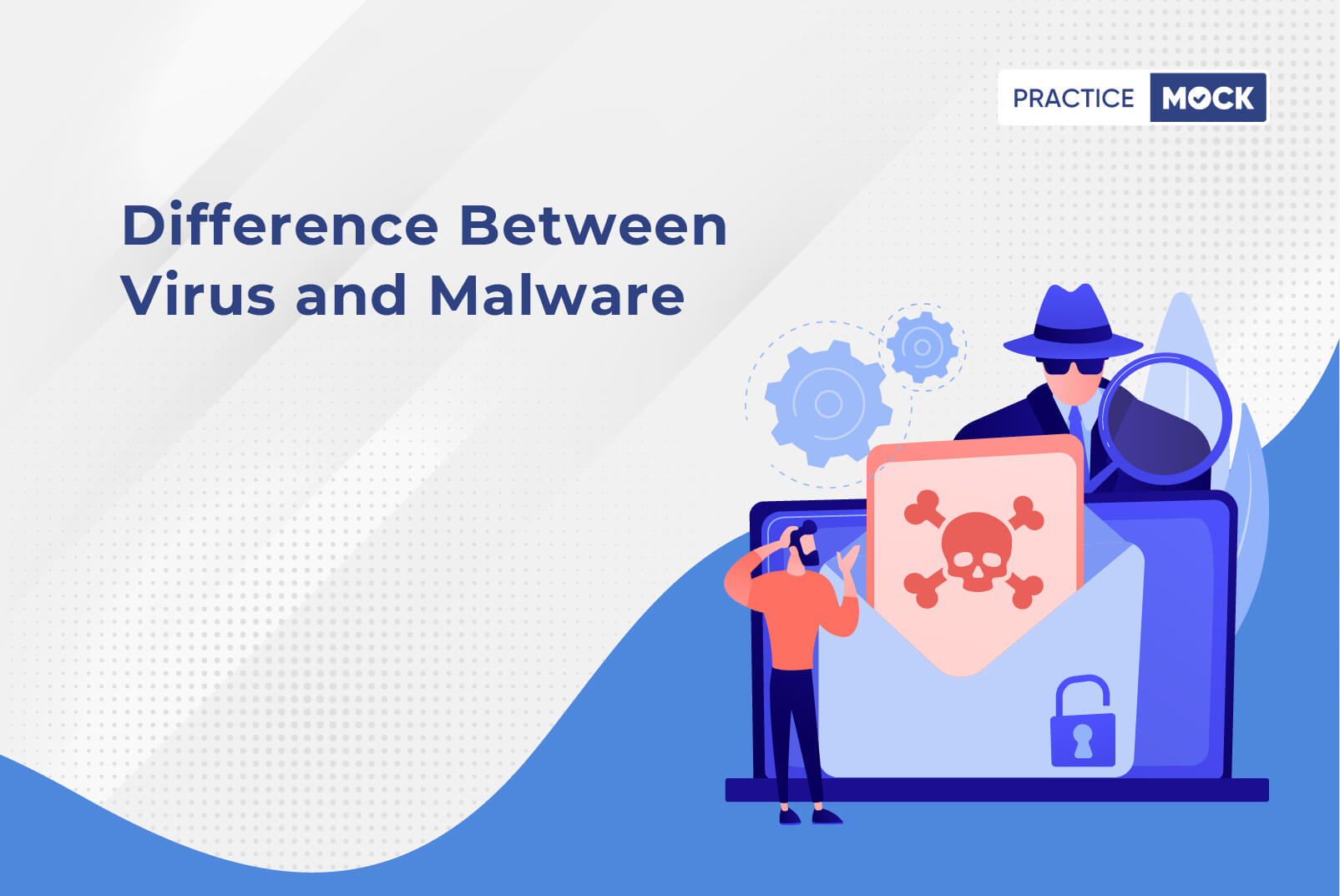Computer Awareness/Knowledge-Virus vs Malware


Malware and Virus are terms that are sometimes used interchangeably. But technically these two terms differ from each other. And as computer terms are important from point of view of Bank Exams, it is essential to understand the difference between the two to tackle the related questions in the Bank Exams like RRB, SBI, IDBI, NABARD Grade-A, etc.
A computer virus is a sort of harmful code or program written or made to alter the way a computer operates. It is designed to spread from one computer to another. A virus operates by inserting or attaching itself to a legitimate program or document that supports macros to execute its code. Viruses may disrupt the system by hijacking system memory, surreptitiously collect data, or shut down the system altogether.


Malware is a short form of ‘malicious software. It is a term for viruses, worms, trojans, and other harmful computer programs that are used to corrupt the system and gain access to sensitive information of the user. As per Microsoft, “[malware] is a catch-all term to refer to any software designed to cause damage to a single computer, server, or computer network.” In short, the software can be identified as malware based on its intended use, rather than a specific technique or technology used to build it. So, a virus is a type of malware and all the viruses are malware. But not malware is a virus.
Let us discuss the main points of difference between viruses and malware, which help you in dealing with the questions related to these important computer terms in the upcoming Bank Exams.


Main Differences Between Malware & Virus
Given below are the differences between malware and virus in a tabular format to easily and accurately understand the two terms:
| Difference Between Malware and Virus | |
| Malware | Virus |
| The full form of Malware is Malicious Software. Malware is any software intentionally designed to cause damage to a computer, server, client, or computer network, generally for a third-party benefit. | The full form of the Virus is a Vital Information Resource Under Seize. A virus is a code usually hidden within another seemingly innocuous program that can produce copies of itself and insert them into other programs or files, and that usually performs harmful actions, like destroying data to corrupt a device. |
| Types of Malware include: Virus Trojan horses Worm Ransomware Spyware Adware Rogue software Wiper Scareware | Types of Viruses include: Boot sector Spacefiller Resident Multipartite Polymorphic File infector Direct Action Macro |
| When malware software attacks your computer device it may Try to retrieve personal information Steal data or payment details Initiate mining for bitcoin Start executing unwanted tasks | If a virus attacks your computer, it may Decrease the processing speed Make too many pop-ups appear on the screen Reset your Passwords Make Different programs execute themselves |
| Total, AV, Malwarebytes, Hitman Pro, and Bitdefender are some famous Anti-Malware software. | Norton McAfee, Avast, and Kaspersky are some famous Antivirus software. |
| A computer system with malware software can be repaired using antimalware software. | Antivirus is used to remove viruses from a computer device. |
Conclusion
From the above-discussed differences, we can conclude that viruses and Malware are technically different from each other in several ways. Malware is designed to get an unauthorized access to a computer system, generally for a third-party benefit. Whereas, A virus is a code that connects itself to different files and programs to infect them to disrupt and corrupt a device. Therefore, antiviruses are designed to remove a virus or infection from any computer device. A good antivirus not only removes the virus only but can also remove malware from a device.
[table “14” not found /]Recent Posts
NaBFID Recruitment 2025, Apply for Officer Positions on Regular & Fixed Term Basis
Apply for NaBFID Officer positions in 2025! Explore full-time regular & fixed-term opportunities in India's…
200+ Reasoning Important Questions For SBI Clerk Mains 2025
In this article we are providing the 200+ Reasoning Important Questions For SBI Clerk Mains…
SSC MTS Final Answer Key 2024 Out, Download Response Sheet PDF
In this blog, we have provided the direct link to access the SSC MTS Final…
RBI Grade B Exam Date 2025, Check Expected Officer Exam Month
Looking for RBI Grade B Exam Date 2025? Check expected Officer Exam Dates and stay…
How to Crack NABARD Grade A Exam in 2 Months?
In this article we talk about how can an aspirant prepare and crack NABARD Grade…
RBI Grade B Notification 2025, Check Latest Updates
Get all the information you need about RBI Grade B 2025 Notification, Eligibility, and Selection…


